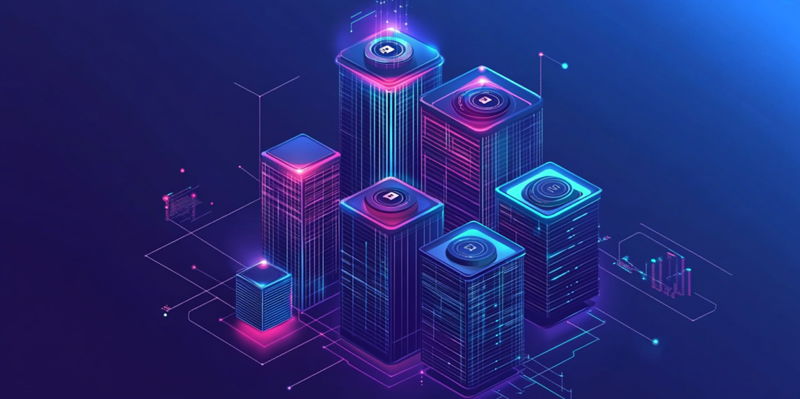Blockchain technology, once humorously referred to as "gold for nerds" by Stephen Colbert, has rapidly evolved into a groundbreaking advancement in the realms of finance and digital innovation, garnering considerable global traction. At its core, blockchain functions as a decentralized database, setting it apart from traditional databases stored on centralized servers. This decentralized structure distributes information across a vast global network of computers belonging to blockchain users, thereby forming a distributed database within a peer-to-peer framework. The absence of a single central authority overseeing the data ledger significantly enhances both transparency and security, making blockchain a transformative force with widespread implications.
Central to the blockchain revolution is Satoshi Nakamoto’s Bitcoin blockchain, which is notable not merely for being the first distributed database, peer-to-peer system, or blockchain concept, but because it facilitated the creation of the first modern cryptocurrency while serving as a blueprint for future blockchain systems. Essentially, a blockchain organizes data into rows, which are traditionally known as records in conventional databases; however, within the realm of blockchain, these are referred to as blocks. These blocks are structured data units that collectively form an interconnected chain through cryptographic methods, thereby ensuring traceability and immutability. The innovative design and secure nature of blockchain have paved the way for its application across various industries, extending far beyond its initial use in digital currencies.
The Mechanics of Blockchain
Understanding the mechanics of blockchain reveals why it is such a powerful and secure data management tool. Picture recording the cards in a poker hand within a database where each card in the deck is assigned a unique number, and the poker hand itself is stored as a sequence of these numbers. In a decentralized network where multiple users concurrently store data, the cards might not appear sequentially, necessitating the use of pointers to connect the data and thus form a chain. A specific row might reference the previous and next rows to maintain data continuity, akin to a doubly linked list in computer science that links data both forward and backward.
Data vulnerability poses a significant challenge; without robust protection mechanisms, users could potentially alter data quite easily. A solution to address unintentional data corruption involves introducing checksums, sums of card values that serve as error-detecting codes. However, checksums fall short when it comes to defending against malicious tampering. For enhanced protection, blockchain systems employ cryptographic hashing rather than basic checksums. Hashing involves generating a unique identifier, or hash value, through a one-way mathematical operation that cannot be reversed to reveal the original data, thereby ensuring the integrity and security of the data chain. This process is fundamental to maintaining the integrity of the blockchain.
Ensuring Data Integrity And Security
Each block’s hash value in a blockchain system is intrinsically linked to the preceding block’s hash value, creating an unbroken chain that stretches down to the original “Nakamoto Block” or Block 0. This continuous linkage allows for easy data integrity verification by comparing hash values; any discrepancy indicates tampering. Unlike standard databases, altering data on a blockchain necessitates simultaneously modifying records across numerous distributed computers, a practically impossible feat. This inherent characteristic ensures that data blocks, once added, are immutable and protected from unauthorized alterations.
Blockchain technology seamlessly integrates strong encryption alongside cryptographic hashing to secure data further. While all users can access blockchain data, only those with the proper decryption keys can interpret and understand it, maintaining privacy and confidentiality. Consequently, blockchain ensures verifiability, permanence, and privacy—transaction records are publicly accessible yet encrypted to prevent unauthorized access. For instance, Bitcoin’s blockchain, which operates as an open ledger, exemplifies this balance of transparency and security, making it a robust and reliable system for digital transactions and beyond.
Challenges and Limitations
Despite its numerous advantages, blockchain technology faces several challenges, primarily stemming from its intensive computational power demands, which significantly impact transaction speed. Bitcoin’s blockchain, for example, processes a relatively modest 4.6 transactions per second (TPS), starkly contrasting with the average of 1,700 TPS handled by traditional credit card networks, underscoring scalability issues that researchers and developers are striving to resolve. Additionally, Bitcoin’s network consumes an enormous amount of energy—reportedly surpassing Switzerland’s energy consumption—due to its intricate network, which is crucial for maintaining reliability and accuracy.
The Bitcoin network comprises full nodes that store extensive blockchain data and Simplified Payment Verification (SPV) nodes that validate discrete transactions. The estimated number of full nodes varies drastically from 6,000 to 200,000, highlighting the decentralized and ever-changing nature of the network. This decentralized structure complicates exact node counting, adding another layer of complexity to the ecosystem. Despite these hurdles, the ongoing efforts to address these challenges reflect a commitment to enhancing blockchain’s efficiency, scalability, and overall performance.
Emerging Blockchain Variations
Blockchain technology, humorously called "gold for nerds" by Stephen Colbert, has evolved from niche to a major breakthrough in finance and digital innovation, gaining worldwide traction. At its heart, blockchain operates as a decentralized database, contrasting with traditional databases on centralized servers. This decentralized model spreads information across a global network of computers from blockchain users, creating a distributed database in a peer-to-peer format. The lack of a central authority governing the data ledger boosts both transparency and security, making blockchain a powerful force with extensive implications.
Satoshi Nakamoto’s Bitcoin blockchain is pivotal to this revolution. It wasn’t merely the first distributed database, peer-to-peer system, or blockchain; it enabled the creation of the first modern cryptocurrency and became a model for future blockchain systems. In a blockchain, data is organized into rows known as records in traditional databases but called blocks in this context. These blocks are structured data units linked through cryptographic methods, ensuring traceability and immutability. This innovative and secure design has led to blockchain’s application in various industries far beyond just digital currency.

